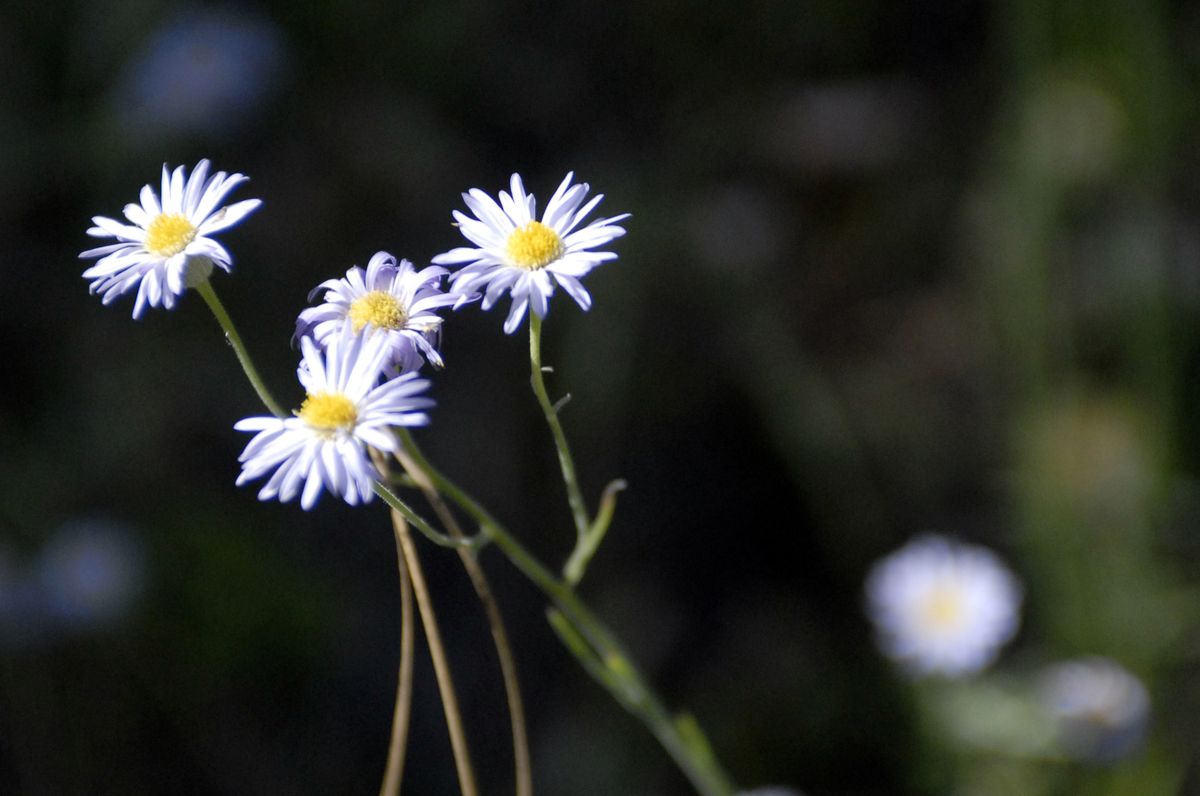Natural beauty next door
Co-management program preserves Dishman Hills area

A visit beyond the Dishman Hills Natural Area sign displayed on the south side of the 8600 block of Appleway Boulevard provides a glimpse into how Spokane got its slogan, “Near nature, near perfect.”
The approximately 520-acre urban forest offers anyone wanting to commune with nature an opportunity to explore an unspoiled natural habitat nestled on the eastern edge of the Spokane Valley.
However, preservation of this natural escape didn’t just happen. It was the foresight of the late Tom Rogers and through his efforts the area is currently managed by three different entities; The Dishman Hills Natural Area Association, Spokane County and Washington State Department of Natural Resources. Together they adopted a joint management agreement to conserve the area for future generations.
“I think the co-management is working very well,” John Bottelli, Spokane County special projects manager said. “As an agency with limited funding, it is helpful to be able to spread the load and get assistance with projects from multiple agencies.”
The Washington Natural Heritage Program and The Nature Conservancy recognize the area as one of the most biological diverse in the state. The area also supports a couple of rare plants and a rare butterfly species. Protecting these valuable varieties, the group decided to limit use of the area to low-impact activities, such as trail hiking and bird watching.
“You have to actively manage the urban forest,” Dishman Hills president Mike Hamilton said. “Otherwise people would love the area to death.”
The idea of preserving the Dishman Hills began in the mid-1960s during one of Rogers’ many solitary hikes. According to a document titled “A Brief History of the DHNA Project” Rogers wrote in 1970, he writes about spending a considerable amount of time in Dishman Hills. He often led groups of school age children on summer hikes as part of a Spokane County Parks and Recreation Department program as well as hiked the trails for his own recreation.
He noticed encroaching development along the outer perimeter of the area. Rogers took it upon himself to prevent the area from being closed off entirely by development.
In spring 1966, he and 16 other volunteers organized the first annual Buttercup Hike to raise awareness about the area. An estimated 85 people participated in the hike. Shortly afterward, the group collected signatures to petition the county commissioners to save the area. With more than 5,000 signatures collected, the county suggested the group form a nonprofit corporation and purchase the property through donations.
The group formed the Dishman Hills Natural Area Association that September.
Through private donations and bridge loans from The Nature Conservancy, the group purchased the first parcel of more than 80 acres for $18,000. In 1970, it repaid the Conservancy thanks to additional donations.
In 1985, the group purchased an additional 140-acre parcel. The 1987 acquisition of a 6-acre parcel brought the estimated total to 226 acres located on the southern end of the area.
“The Dishman Hills is part of people growing up in Spokane,” Hamilton said of their success. “I go out with people who say it hasn’t changed since they were kids. They want to support it so it will remain that way.”
Spokane County owns an estimated 228 acres of the area, purchased through donations from Ina H. Johnston, Dishman Hills Association and state and federal matching funds. In 1970, Redeemer Lutheran Church donated the 6-acre Camp Caro parcel – lodge and park – on the north end of the natural area.
The Natural Resources Conservation Areas legislation in 1987 identified the Dishman Hills as one of four new conservation areas in the state. The Nature Conservancy purchased 70 acres in the northwest portion in 1988, and sold it to DNR in 1989.
Through a state-led effort, a plan was adopted in 1995 to co-manage the natural area among the three organizations.
“This co-management system is unique to our sites,” said Pene Speaks, Washington State Department of Natural Resources assistant division manager. “We work pretty well together.”
However recent announced budget cuts may require the state to take a lesser role in managing Dishman Hills.
“We’re currently evaluating the impact of these cuts statewide,” Speaks said. “Overall it was a 50 percent reduction of our budget.”
The Dishman Hills group plans to replicate the success of the management agreement with the latest acquisition of 80 acres near Tower Mountain, including a climbing area known as Big Rock.
This latest acquisition brings the group closer to achieving a long-term goal of connecting Dishman Hills with the Tower Mountain area. Hamilton calls this the “Dream Trail,” a two-mile stretch between the two areas.
“It’s an exceptional area,” Hamilton said of Dishman Hills. “Get out of any trail, stop, look left, look right and you’ll see a nice natural scene that hasn’t changed for 1,000 years.”